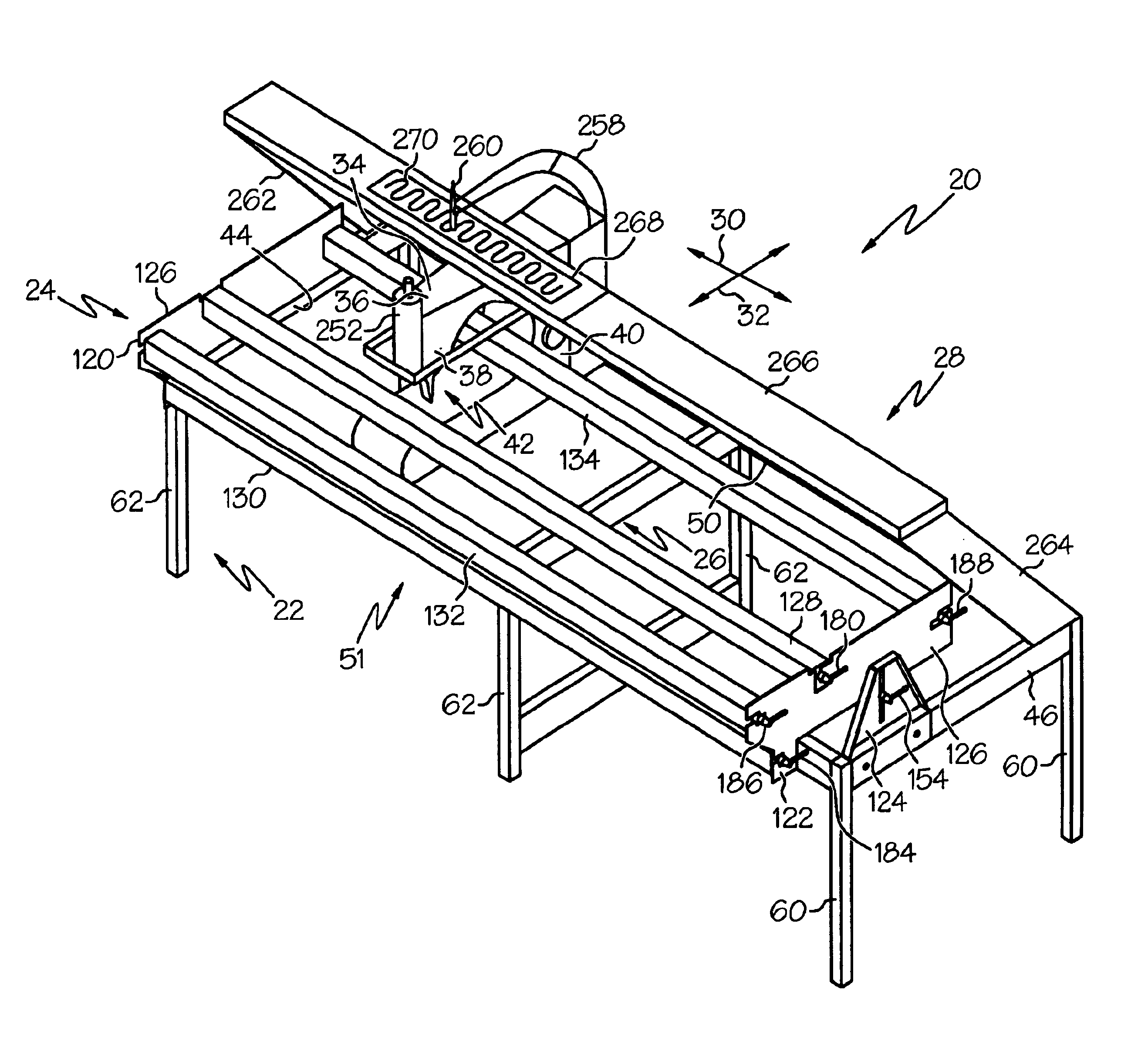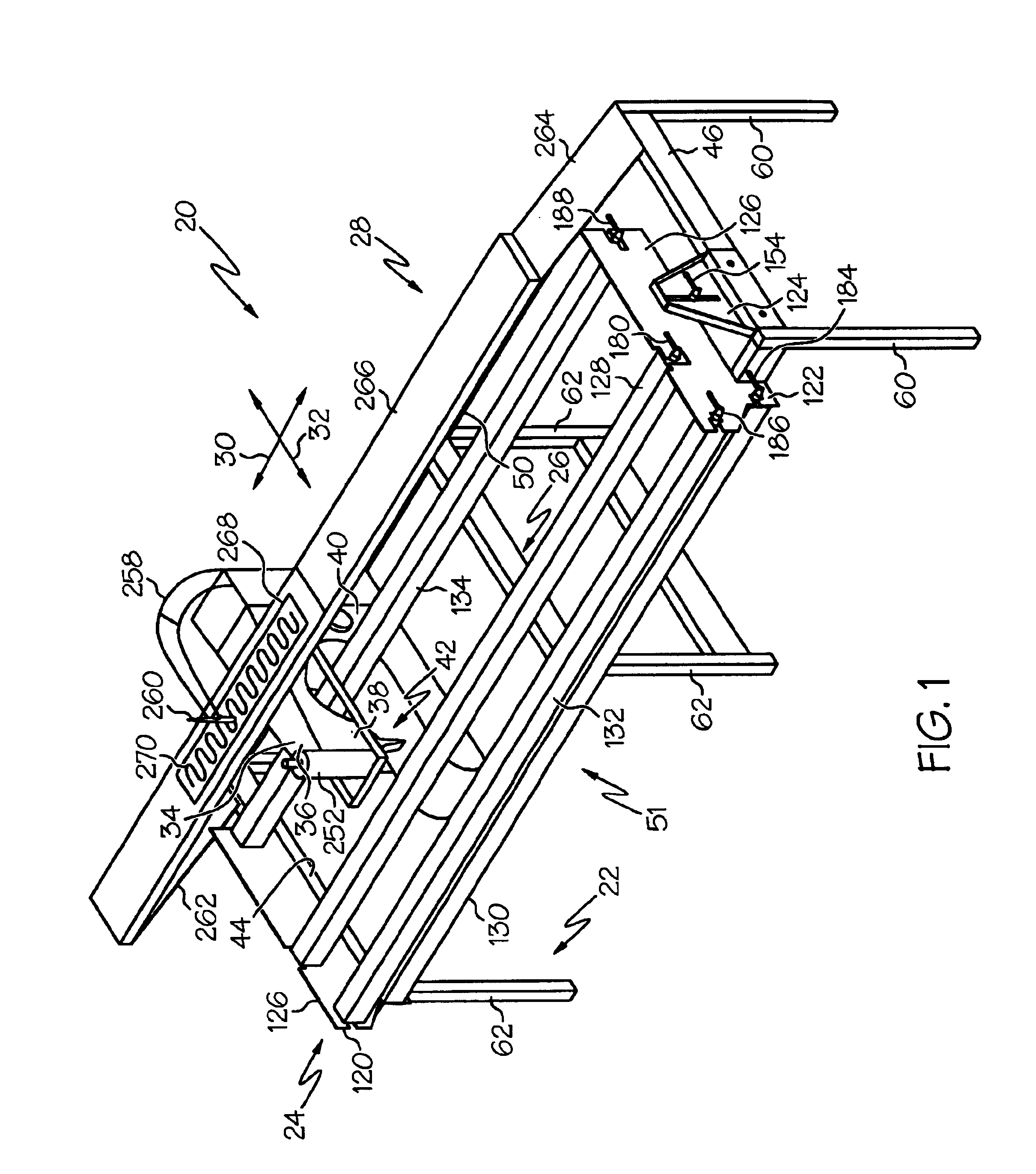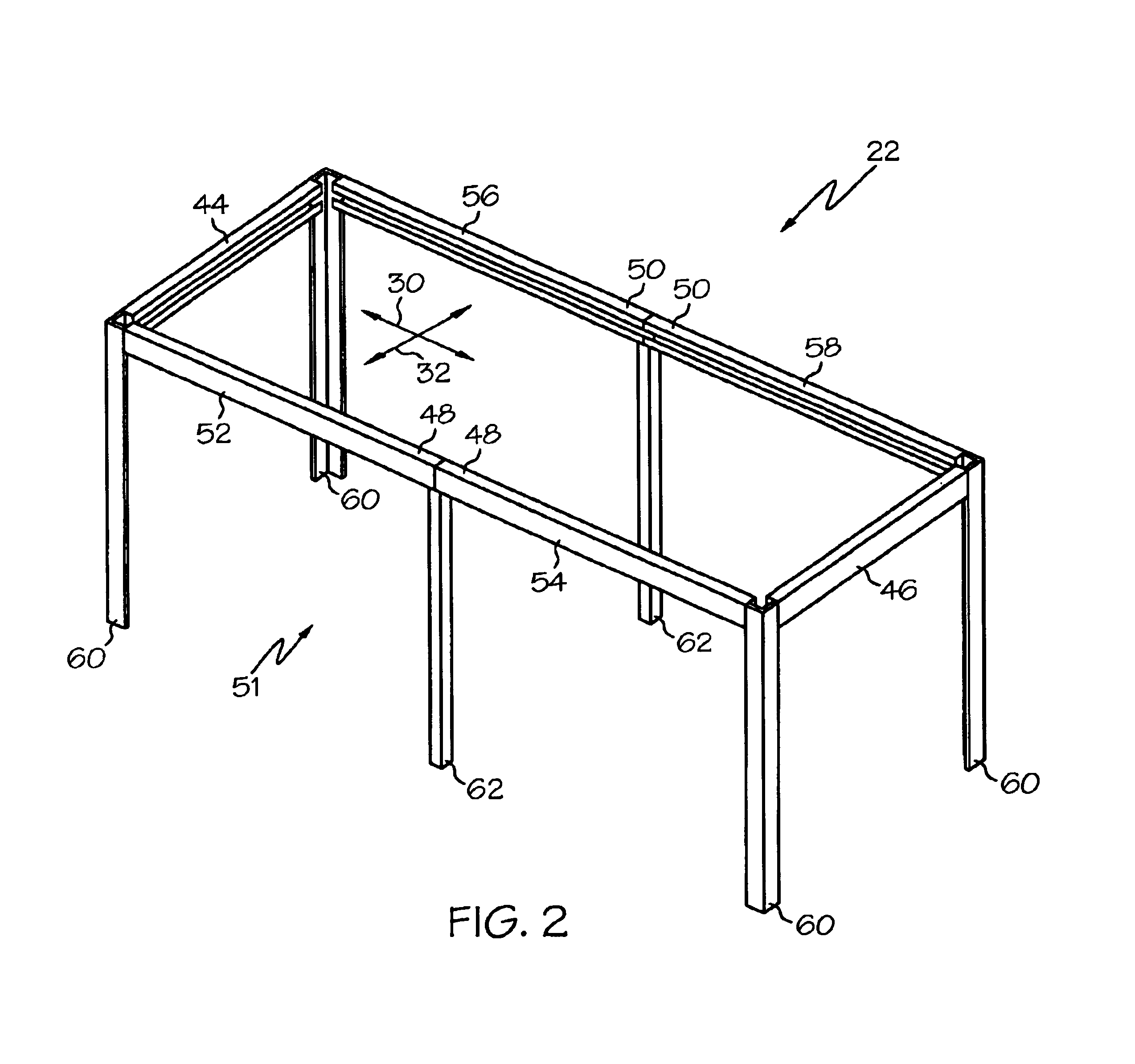Quilting table for a sewing machine
a sewing machine and quilting technology, applied in the field of quilting equipment, can solve the problems of difficulty in hand stitching, and inability to move the fingers, and achieve the effects of facilitating the loading and alignment of fabrics, avoiding wheel derailment, and being easy to assembled
- Summary
- Abstract
- Description
- Claims
- Application Information
AI Technical Summary
Benefits of technology
Problems solved by technology
Method used
Image
Examples
Embodiment Construction
[0036]FIG. 1 shows a front perspective view of a quilting table 20 in accordance with a preferred embodiment of the present invention. Quilting table 20 generally includes a frame 22, a fabric support system 24, a platform assembly 26, and an overhead shelf 28. Platform assembly 26 is moveable relative to a longitudinal dimension 30 and a transverse dimension 32 of frame 22. In a preferred embodiment, platform assembly 26 supports and transports a conventional, household sewing machine 34 having a machine head 36 on the end of an arm 38 extending from a base structure 40. The open region beneath arm 38 and between each of machine head 36 and base structure 40 is commonly referred to as a throat 42.
[0037]Referring to FIG. 2 in connection with FIG. 1, FIG. 2 shows front perspective view of frame 22. Frame 22 includes a first side rail 44 and a second side rail 46 supporting a front box channel rail 48 and a rear box channel rail 50. Front and rear box channel rails 48 and 50, respecti...
PUM
 Login to View More
Login to View More Abstract
Description
Claims
Application Information
 Login to View More
Login to View More - R&D
- Intellectual Property
- Life Sciences
- Materials
- Tech Scout
- Unparalleled Data Quality
- Higher Quality Content
- 60% Fewer Hallucinations
Browse by: Latest US Patents, China's latest patents, Technical Efficacy Thesaurus, Application Domain, Technology Topic, Popular Technical Reports.
© 2025 PatSnap. All rights reserved.Legal|Privacy policy|Modern Slavery Act Transparency Statement|Sitemap|About US| Contact US: help@patsnap.com



